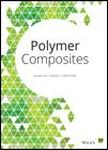版权所有:内蒙古大学图书馆 技术提供:维普资讯• 智图
内蒙古自治区呼和浩特市赛罕区大学西街235号 邮编: 010021

作者机构:Zhejiang Univ Sch Mech Engn State Key Lab Fluid Power & Mechatron Syst Hangzhou 310027 Peoples R China Zhejiang Univ Sch Mech Engn Key Lab Adv Mfg Technol Zhejiang Prov Hangzhou Peoples R China State Owned Wuhu Machinery Factory Wuhu Peoples R China Shanghai Acad Spaceflight Technol Shanghai Inst Satellite Engn Shanghai Peoples R China
出 版 物:《POLYMER COMPOSITES》 (Polym Compos)
年 卷 期:2025年第46卷第9期
页 面:8424-8441页
核心收录:
学科分类:08[工学] 0805[工学-材料科学与工程(可授工学、理学学位)] 080502[工学-材料学] 0703[理学-化学]
基 金:This research did not receive any specific grant from funding agencies in the public commercial or not-for-profit sectors
主 题:computational modeling cure behavior finite element analysis (FEA) polymer-matrix composites (PMCs)
摘 要:Curing residual stress (CRS) is common in polymer-matrix composites due to the anisotropic properties of materials. Finite element method (FEM), the most extensively used approach for curing behavior prediction, is usually complicated and time-consuming. To achieve a fast prediction of process-induced stresses, a convolutional neural network (CNN) is established based on the FEM. Firstly, a fully coupled methodology is built and validated through distortions of experimentally manufactured laminates. Then, it is applied to generate models with different stacking layers, and the residual stress is computed and serves as the dataset of the deep learning model. Finally, the construction and hyperparameters are determined, and the good generalization performance proves the high accuracy of the current model. Besides, the CNN method (14 min). The supervised machine learning method shows great potential in promoting efficiency in stacking sequence designing and optimization of composites.